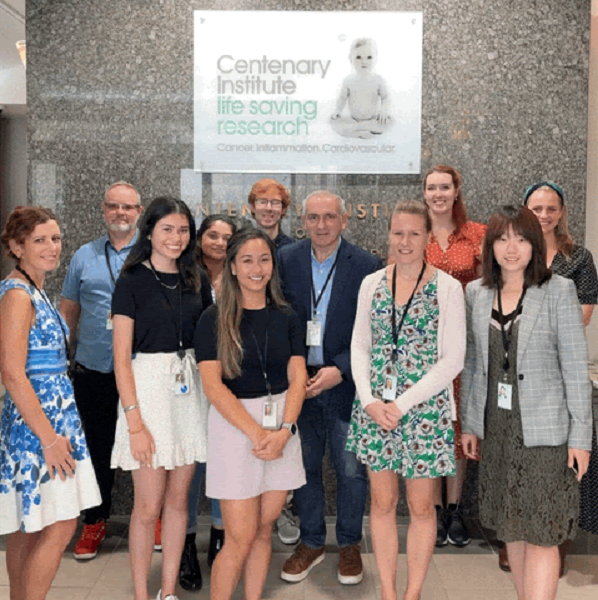How whole genome sequencing is revealing life-saving detail about inherited heart disease
When patients visit Professor Chris Semsarian’s clinic with questions about their heart health, he hopes they walk out the door with answers. He wants to be able to tell them if they have a gene mutation associated with heart disease, so they can take life-saving action. Or, better still, that they don’t have the mutation, so they leave with one less worry.
For two potentially debilitating, even fatal inherited cardiac conditions, Semsarian is now considerably closer to this goal thanks to NSW Health funding. A two-year grant, awarded as part of the Sydney Genomics Collaborative in 2016, has powered an investigation into how whole genome sequencing (WGS) can help diagnose heart disease.

A pan-Sydney team of 10 investigators led by Semsarian explored whether WGS has advantages over routine genetic testing, looking specifically at the two most common cardiomyopathies, known to be genetically inherited and caused by a fault (mutation) in a gene. Hypertrophic cardiomyopathy (HCM) leads to thickening of the heart muscle, and dilated cardiomyopathy (DCM) to an enlargement of the heart. Both can cause heart failure, disturbed heart rhythms and, in the most distressing instances, sudden and apparently inexplicable death, often in young people.
Semsarian, the Deputy Director of the Centenary Institute and Head of the Agnes Ginges Centre for Molecular Cardiology, has spent much of his professional life exploring the connection between genes and cardiovascular disease. He explains that in previous routine testing for the cardiomyopathies HCM and DCM, technicians examined a “panel” of the specific 50-to-100 genes related to cardiac disease.
Semsarian’s team applied the latest state-of-the-art technology to their research, with the Kinghorn Centre sequencing not just a panel of likely genes, but also the whole genome.
‘We sequence every part of the DNA: the bits of the DNA which code protein, called exons, as well as regions called the introns, which are between those exons,’ he explains. ‘The introns were always referred to as “junk DNA”, because it looks like it does nothing. But in this study, we show that it’s particularly important to sequence all those bits of the DNA.
‘It’s a superior test, so we asked, “If you do this test, how much more information do you get in families? How many more diagnoses do you identify? What’s the value-add of doing a whole genome sequence rather than just the panel of genes? How many families do you solve and provide an answer?”’
The answer was exciting. Changes in the “junk DNA” were key and enabled more gene mutations to be identified – and up to 20% more families with HCM or DCM to be identified.
Put simply, more families will leave Semsarian’s clinic with a diagnosis and can monitor their health or manage their condition through lifestyle changes, medication or surgery. And in the most heartbreaking circumstances, where an otherwise young, healthy, symptomless person dies suddenly, family members are more likely to be diagnosed with the gene mutation.
‘I have spent my whole life trying to get answers for these families,’ he says. ‘These are kids that go to school, and don’t come home. They go for a game of netball or soccer and they die on the field although they’ve been well all their life. No warning signs, no symptoms, nothing.
‘These are tragedies in the worst possible sense and families come with a thousand questions and want to know why their son or daughter died suddenly and, secondly, how can we prevent this happening to anyone else in my family. I’m pleased to say, genetic testing answers both those questions. It pinpoints the cause, and it uses that genetic information to screen other family members. Because if we know somebody is at risk of sudden death, there are plenty of things we can do to stop it happening.’
The results of the team’s research were published in the prestigious Journal of the American College of Cardiology, offering a world-first insight into whole genome sequence specifically of the cardiomyopathies.
‘That’s massive kudos to the NSW Government on an international stage, illustrating how NSW is leading the way in this field. What we’ve learnt from our studies here has impacted globally, because we’ve used that information for guideline documents, which tell cardiologist around the world how to manage a family with cardiomyopathy when you perform whole genome sequencing testing.’
For Semsarian, too, it is further proof of the power of genetic information, and he hopes many more take advantage of testing.
‘If there’s one core outcome of that study, it’s that we’re picking up more people with these genetic conditions. In the end, I’m a cardiologist. I want to help patients and families and prevent problems from happening. It directly impacts on diagnosis and management, which is what I love about what we do at my Centre. All the way from investigating the DNA, to helping the patient.’
By Michelle Schlechta
Updated 4 years ago